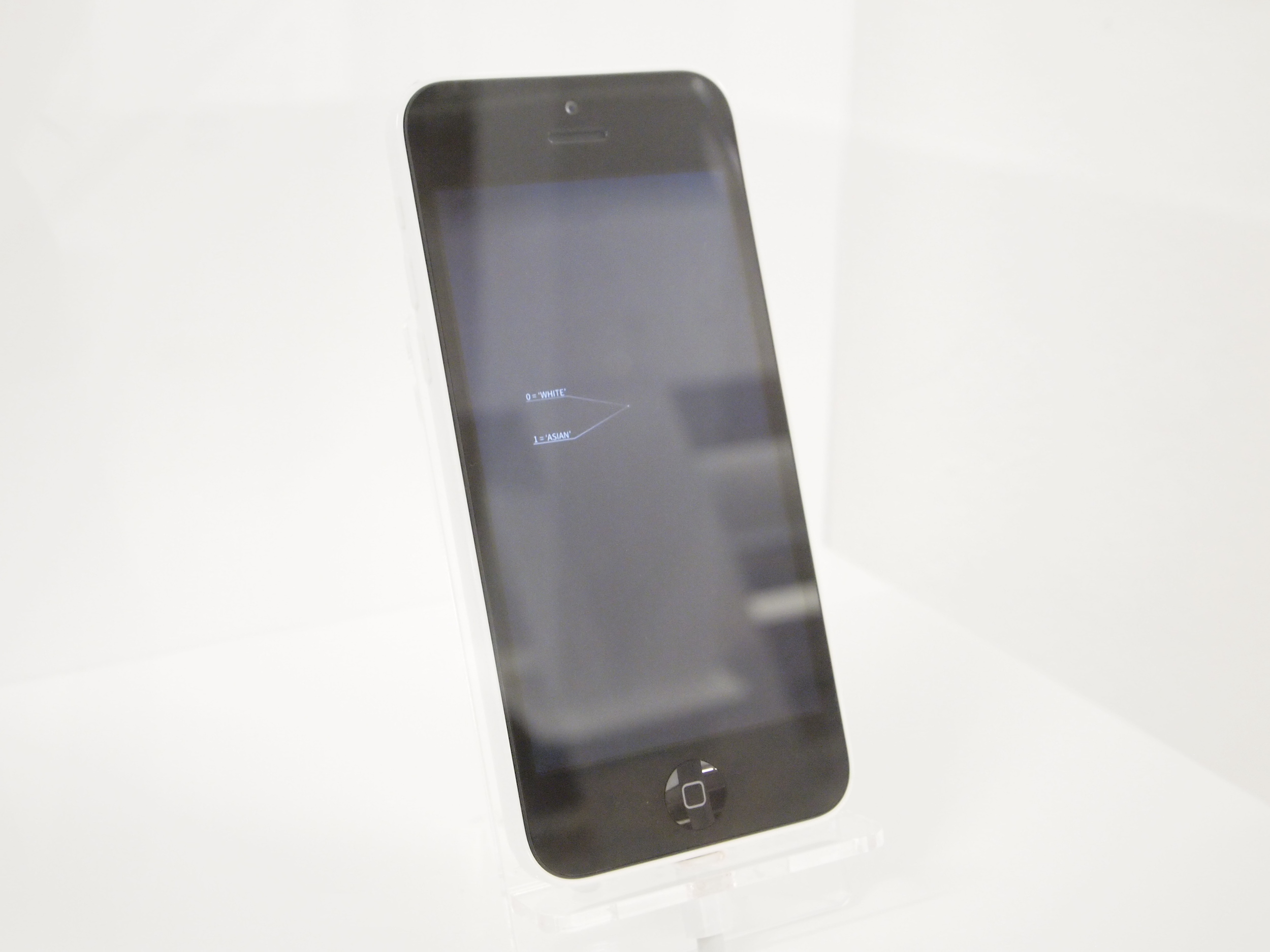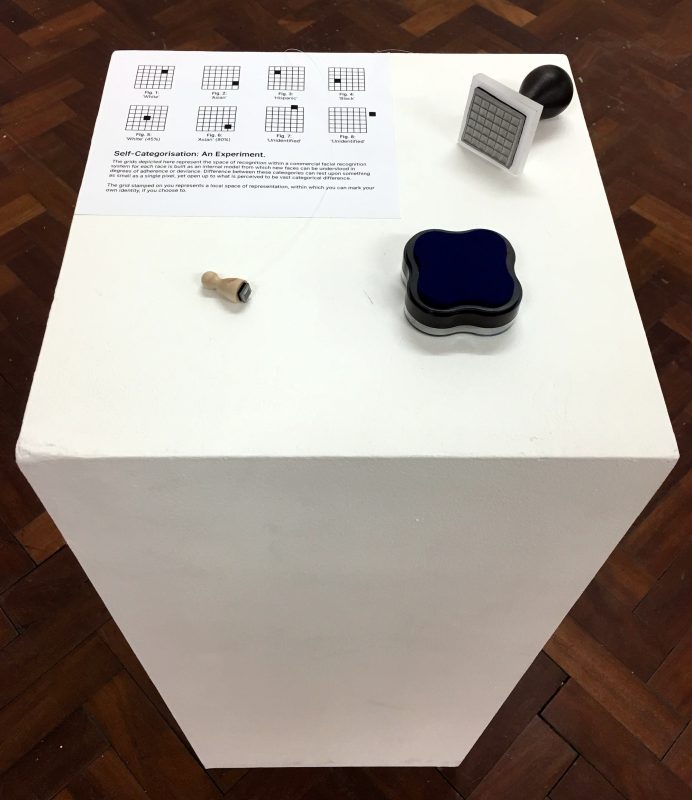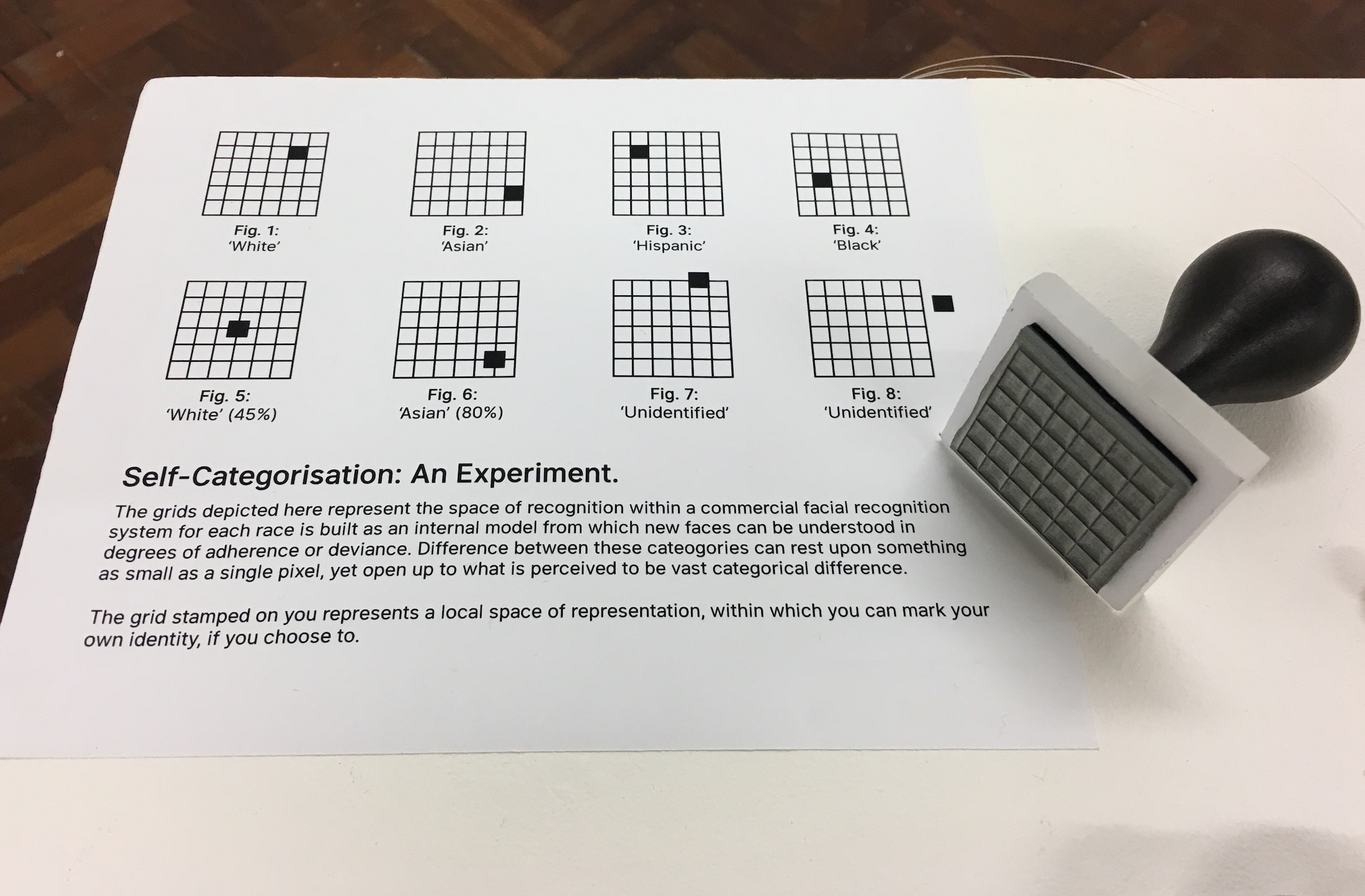Identity Turns on A Pixel When the World Becomes A Picture
Layers of Abstraction: A Pixel at the Heart of Identity
Murad Khan and Shinji Toya, 2019
HD Video.
Narration ready by Alex Wilkinson
Quotation by Ramon Amaro
This project centres around a critical examination of the limits of categorisation in machine learning systems. Specifically, we’re interested in the institution and function of racial categories in image-based facial recognition algorithms; the project questions how social structures and technical systems intertwine to intensify existing conditions of bias and inequity, and how this bias operates as a substrate of the algorithmic image.
Layers of Abstraction: A Pixel at the Heart of Identity is a visual indication of research-in-progress, presenting the mixed technological method we used to uncover a single pixel that represents the limit between ‘Asian’ and ‘White’ racial categories in a commercial facial recognition system. By passing the image through more than one image-based algorithm, we begin to distil the locus of difference as read by the machine-eye.
The pixel acts as a threshold through which the system reconfigures itself and, in doing so, gives rise to identities hidden amidst arrays of colour channel data. The minute, discrete, and tangible nature of the pixel as a racialized limit point between categories points to a social problem at the heart of abstraction in machine learning systems.
In the exhibition at SPACE, the method is outlined through a tutorial video coupled with an animated example of the output of our research.

![]()
![]()
Untitled (Pixel)
Murad Khan and Shinji Toya, 2019
Animation on a Smartphone, Acrylic Box.
Developed as part of the residency at Space Art + Tech in collaboration with Murad Khan with the support of Ramon Amaro.
Special thanks to Simon Crowe for the contribution to the workshop for the residency.
Interview on the project at Space | Workshop: Categorisation and Artificial Intelligence




